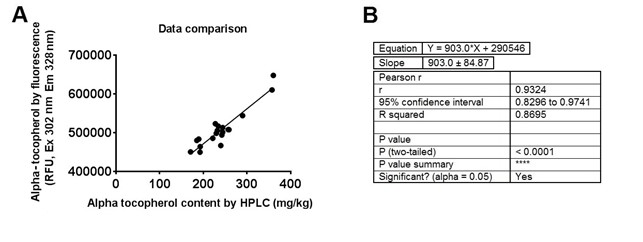Rapid fluorescence spectroscopic method
A method to detect the amount of bioactive lipophilic phenolic compounds (tocopherols or vitamin E)
Fresh olive oils contain a variable amount of tocopherols, lipophilic phenolic molecules characterized by antioxidant and vitamin activities (specifically alpha-tocopherol is the form able to play the vitamin E role).
However, since these compounds are sensitive to oxidation therefore their level declines during oil storage (depending on the adopted conditions and by the natural composition of the oil sample).
The fluorescent analysis of olive oils takes advantage by the presence of natural fluorescent components (e.g. chlorophylls and derivatives) including tocopherols.
Fluorescent spectra scan of olive oil samples was performed using an instrument with a 96-wells black plate reader.
Measurements (excitation at 302 nm and emission at 328 nm) were carried out by transferring directly a little amount of oil sample (250 µl) without any additional treatments (as dilution and extraction, see the Figure 1).
The results of fluorescence analyses of olive oil samples using this tool were found to be in high correlation with the HPLC quantification of alpha-tocopherol content (see Figure 2) and this method was successfully in-house validated (e.g. in terms of parameters as precision, accuracy, LOD, LOQ, robustness).
This approach can permit a rapid, high-throughput screening of the total amount of tocopherols in olive oils samples with almost no sample preparation.

Figure 1: Assay flow diagram - 250 µl of virgin olive oil are transferred into 96-wells plate and subjected to fluorescence spectroscopic analysis.

Figure 2: Correlation between alpha-tocopherol concentrations determined by fluorescence spectroscopic assay and by HPLC-FLD reference method.
